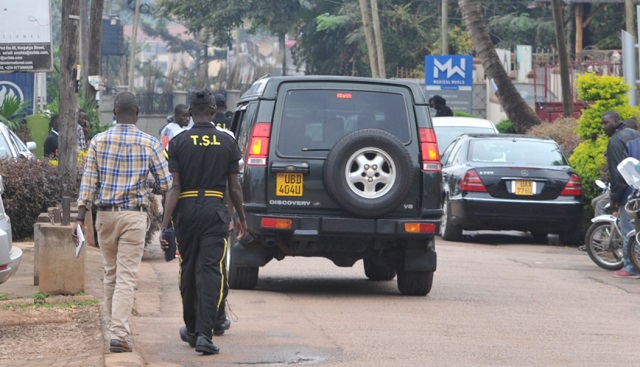
KCCA, UNRA praised but those walking, cycling live with daily fear of injury
Kampala, Uganda | RONALD MUSOKE | After years of enduring dusty and narrow roads, Ugandans want tarmacked pothole free and wider roads. And it is not vehicle owning motorists who are complaining most; it is the people walking, riding bikes, and those who use taxis.
That is according to a new report on road user satisfaction – or perhaps more accurately; dissatisfaction published by the Uganda Road Fund
To understand the frustration of users of Ugandan roads, imagine a typical Ugandan urban road. It is single carriageway, about 4 metres wide, designed as a two-way road with each side carrying traffic in opposite direction. Since an average car is about 1.8 meters wide, driving on these roads involves close shaves every time since there is just about 200cm between cars moving in opposite direction.
In most towns and cities, some roads have been widened slightly to accommodate more traffic. But that means the roads have eaten into the space usually reserved for people walking. Instead of walking on footways, they must now walk on the road. Often times, however, there are street vendors and hawkers spreading their tomatoes, bananas, and oranges on the pavement and parked vehicles. It gets totally crazy when you add the motorcycle boda-boda taxis to the mix. Cars can barely move. There is jam everywhere.
Michael Ssenabulya, a resident of Kampala happily speaks of his frustration. The 25-year old has only recently acquired a driving licence and is a Uber driver.
“The creators of traffic jam in Kampala are undisciplined boda-bodas and stupid car drivers,” he says.
He also recalls when as a pedestrian, he dreaded walking on the roads; especially during Kampala city’s rush hours.
“Pedestrians cannot guarantee their safety even on their designated sidewalks,” he says, “The roads are too narrow.”
While releasing the road safety report in Kampala on Oct. 25, Eng. Michael Odongo, the outgoing executive director of the Uganda Road Fund said finding a ‘winning formula’ of how to share road space among pedestrians, cyclists and motorists remains the biggest challenge for designers of Ugandan roads.
The report is based on a survey of seven road user groups including; pedestrians, passengers; cyclists, motorcyclists; car drivers; taxi/bus drivers; and truck drivers on both tarmac and murram roads across the country to gauge their level of satisfaction with Uganda’s roads. The report measures changes in the satisfaction of the road users.
Uganda has about 140,000km of public roads, according to the Ministry of Works and transport. The biggest portion, between 60,000 and 80,000km, are community access roads under the 1,155 sub-counties. Most are not tarmacked.
According to the report, users of these roads are not happy. Why many urban road users; especially in Kampala, said they are happier about their roads than before, 45.5% of those using district, urban and community access roads felt their experience has not changed. In fact they are more dissatisfied than last year, when just 35% said their road user experience had not improved.
Faced with this particular bit of the survey findings, Jennifer Namuyangu, the Minister of State for Local Government said there has been improvement in the quality of countryside roads –but the users want something else; tarmac.
“Most Ugandans appreciate tarmac roads more than murram roads,” she said.
She said the countryside roads have improved greatly since local governments started maintaining them after US$150 million worth of equipment was acquired last year. She said, however, many Ugandans think the local governments are not doing enough because the local governments maintain murram roads.
Uganda has 20,500km of roads categorised as national roads. About 3,800km are urban roads in 41 municipalities, 30,000 km district roads under 121 district local governments and 7,700 km urban roads under 214 town councils. About 4,257km of urban roads in town councils are km is paved. Another 16, 250km are under management of the Uganda National Roads Authority (UNRA).
Kampala Capital City Authority has the most paved roads in the country; 580km. But that is just 25% of its 2110km of roads. The rest; 1520km of city roads are unpaved.
Most of the road users interviewed about KCCA roads (44%) felt that roads have improved compared to last year. That compares well with the 45% who said national roads had improved compared to the previous year. However, most of these were the drivers. Those walking, riding on taxis or boda-boda, motorcycles, and bicycles were less satisfied.
Across the country, pedestrians remain the most disgruntled users followed by drivers of public service vehicles and motorcyclists according to the survey. It is a serious issue given that walking and cycling are the most common mode of transport in Uganda.
To compile its report, the Uganda Road Fund interviewed 2,791 respondents between February and March this year. They were also asked about services provided by individual road agencies in particular; road safety; availability and quality of road-related facilities such as service bays, public toilets, police posts, and overnight parking.
The survey, which is a bi-ennial exercise aimed at providing feedback to roads agencies like the Uganda National Roads Authority (UNRA), Kampala Capital City Authority (KCCA) and the Ministry of Works and Transport.
It found that the percentage of respondents who were satisfied with their experience on Uganda’s road network had more than doubled to 57% between 2017 and 2019.
 The Independent Uganda: You get the Truth we Pay the Price
The Independent Uganda: You get the Truth we Pay the Price


